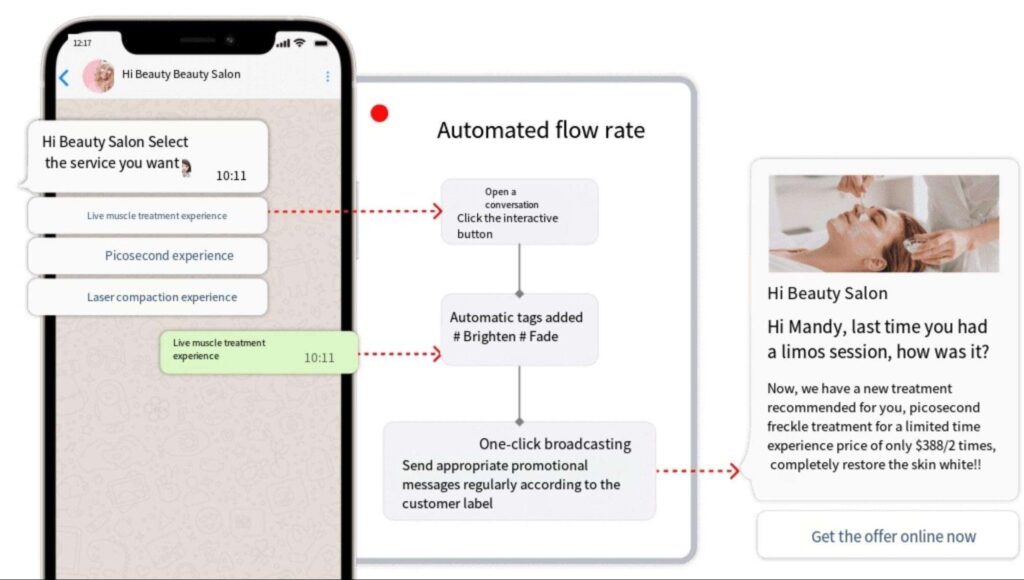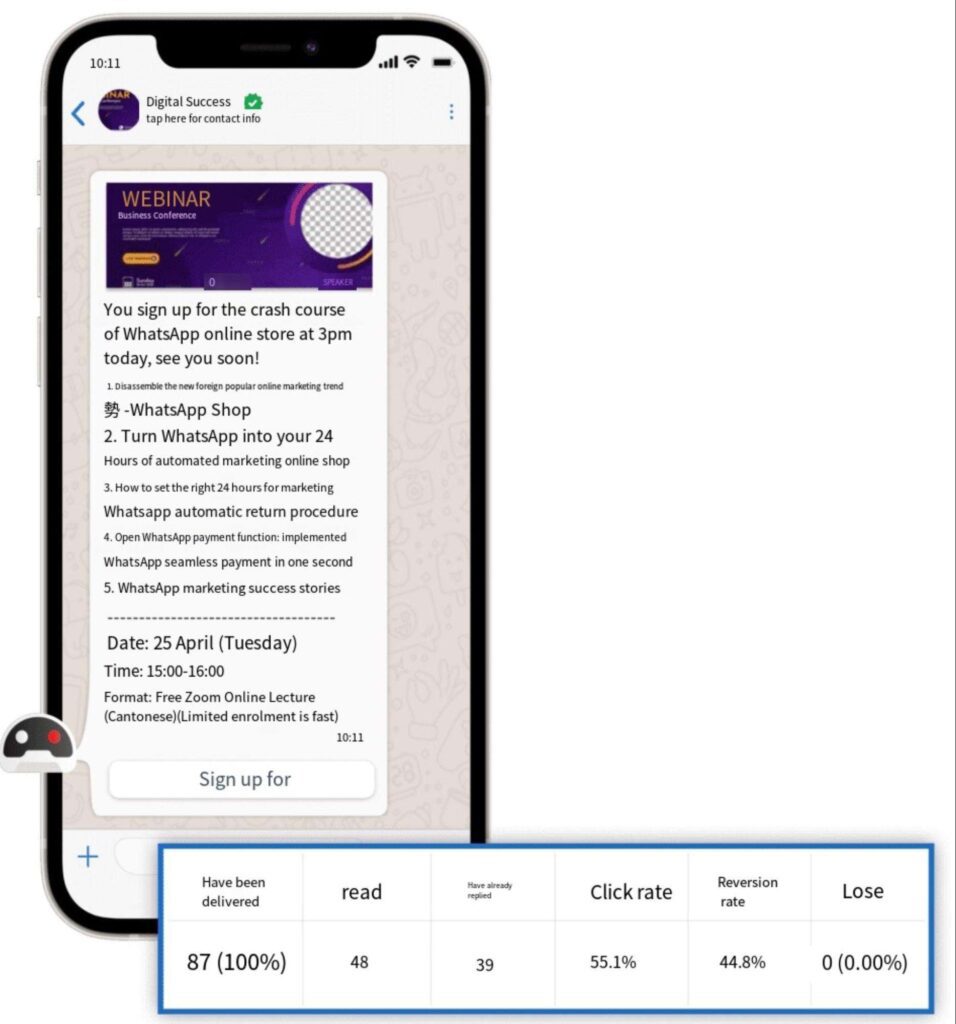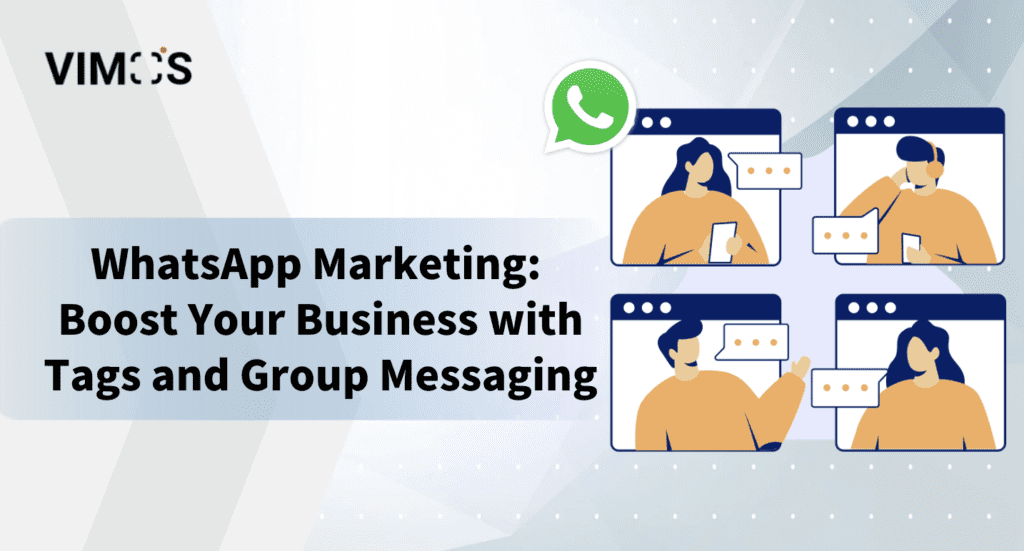Dear bosses, have you just acquired a new batch of customers but don’t quite understand their preferences? Are you looking to promote your business but feeling lost, and unsure of where to start? In this digital age, establishing close connections with customers is extremely important. WhatsApp Business offers WhatsApp Tags and WhatsApp Group Messaging, which not only help you better understand and manage customers but also enable precise WhatsApp marketing. In this article, we’ll delve into how these features can elevate your business.
What are WhatsApp Tags?
WhatsApp Tags function like small tags attached to chats and contacts, aiding businesses in categorizing and managing conversations with customers. These tags can be set based on customer needs or issues.
WhatsApp Tag Tip 1: Categorize by Customer Interests
You can set tags based on customer interests or purchasing behavior. For example, if a customer frequently buys sports equipment, you can tag them as a “Sports Enthusiast.”
WhatsApp Tag Tip 2: Categorize by Transaction Frequency
Another useful way to set tags is based on customer transaction frequency. For instance, you can tag customers who have only made one purchase as “New Customers” and those who purchase regularly as “Loyal Customers.”
WhatsApp Tag Tip 3: Categorize by Customer Needs
If your business offers various products or services, you can set tags based on specific customer needs. For example, if you run a gym, you can tag customers interested in yoga classes as “Yoga Enthusiasts.”
WhatsApp Tags are not just tools but also strategies that can help deepen customer relationships and enhance marketing effectiveness.
Read more: Enhance Your Business with WhatsApp CRM: A Simple Guide
WhatsApp Group Messaging: What Is It?
WhatsApp Group Messaging, simply put, is the feature that allows sending messages to multiple customers or contacts at once. Unlike regular one-on-one chats, it enables businesses or individuals to quickly connect with a large number of people.
However, it’s worth noting that to avoid spam messages, WhatsApp imposes certain limitations on group messaging. This is why many small and medium-sized businesses opt to use the WhatsApp API, as it offers more flexibility and functionality.
Read more: Maximize WhatsApp Business: Easy Tagging with API & Broadcast
Limitations of WhatsApp Group Messaging
- Maximum Recipients per Message: WhatsApp Business limits the number of contacts you can send a message to at once to 256. This means if your customer or contact list exceeds this limit, you’ll need to send messages in batches.
- Recipient Opt-In: Recipients can only receive your group messages if they have saved your business number in their contacts. This ensures that recipients genuinely want to receive your messages and helps effectively prevent spam.
- Lack of Precision Marketing: Since group messaging primarily involves sending promotional messages on a large scale, this “one size fits all” approach may result in many recipients ignoring the messages. After all, when messages don’t cater to specific users’ needs or interests, they are likely to be disregarded. This method makes achieving true precision marketing difficult and may waste significant marketing resources.
- Manual Updates: WhatsApp Group Messaging requires businesses to manually update and manage customer databases, which is not only time-consuming but can also lead to data omissions or errors, affecting marketing effectiveness.
WhatsApp API: Precision Group Messaging Under Multilayer Tag Strategy
When discussing marketing strategies for small and medium-sized businesses, the ability to precisely target audiences and send relevant messages is crucial. The WhatsApp API provides this capability, allowing businesses to interact with customers more effectively. Compared to the basic group messaging feature of WhatsApp Business, the WhatsApp API offers deeper, more personalized customer interaction and analytics tools.
- Multilayer Tag Strategy
The automatic tagging feature of the WhatsApp API allows businesses to trigger customer tags and categorization based on WhatsApp conversations.
For example, a customer can be tagged as both a “New Customer,” “Interested in Promotions,” and “Interested in Women’s Fashion.” This detailed classification enables businesses to better understand each customer’s characteristics and provide more personalized services.

- Personalized Promotion for Precision Marketing
A single group messaging strategy often fails to meet the needs of different customers. However, through the automatic tagging feature of the WhatsApp API, businesses can design various group messaging strategies and send the most appropriate messages to different customer groups.
For example, for customers interested in promotions, businesses can send reminder messages when promotions start, while for customers interested in women’s fashion, they can send discount messages for women’s clothing products.

- Post-Broadcast Analysis Reports
Through the WhatsApp API, businesses no longer need to manually collect and organize customer data. VIMOS further provides WhatsApp broadcast analysis reports, which not only detail message sending, delivery, and reading statuses but also include important data such as click-through rates, response rates, and failure rates.
These data analyses help businesses gain deeper insights into the effectiveness of marketing campaigns, make wiser strategic decisions, and improve the effectiveness of their marketing investments.

Read more: WhatsApp Business Free Auto-Replies: A Simple Step-by-Step Tutorial
Join WhatsApp API Right Now!
You’ve learned how to use WhatsApp Tags to send the most effective WhatsApp group messages. Remember, precise tag settings can enable more effective interaction with your customers, and VIMOS’s automatic tagging feature can make this process even simpler. Interested in delving deeper into WhatsApp group messaging, flexible uses of tags, and advanced features of the WhatsApp API?










